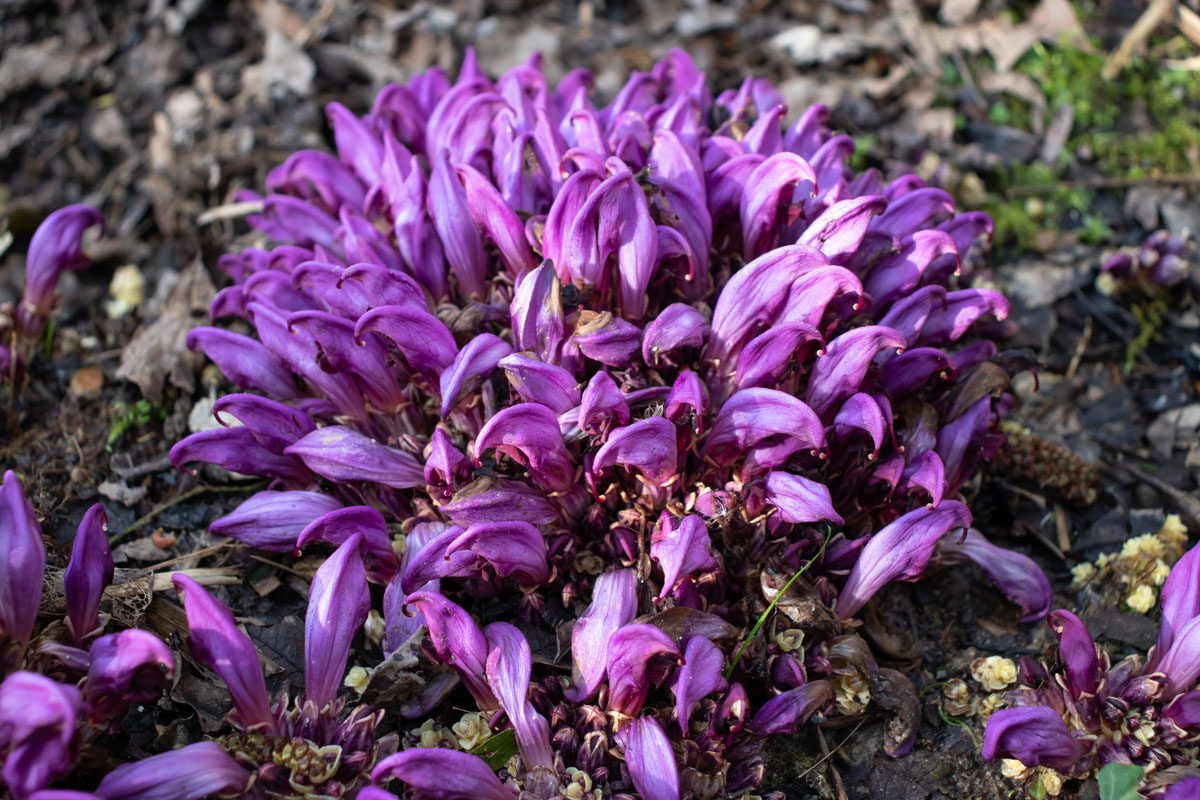Description
Lathraea –
There are about 7 species of leafless, mainly subterranean, parasitic perennials (meaning they attach to the roots of other trees and shrubs), in this genus. They occur in damp woodland in temperate Europe and Asia. Branching rhizomes bear usually rounded, scale like, fleshy, ivory to mauve leaves in 4 rows. They are grown for their unusual, tubular, 2 lipped, white to mauve flowers, borne in raceme like inflorescences at ground level in spring. Grow at the base of a host tree or shrub.
Scatter seeds among the tree roots in shade, in moist, but well drained soil in partial shade. Mulch with leaf mold in autumn. They can be induced to grow in a woodland setting if the right host genera are present.
L. clandestina – Purple Toothwort – This parasitic, rhizomatous perennial from Southwestern Europe grows 3/4-2″ tall with an indefinite spread. It produces opposite, kidney shaped, stem clasping, scale like white leaves, 1/4″ long.. Racemes of 4-8 tubular, 2 lipped mauve flowers, to 1 1/4″ long, are borne just above the ground in early and mid spring. Plant on Willow (Salix), Poplar (Populus) and Alder (Alnus).
Zones 5-9




